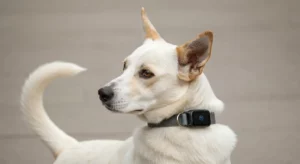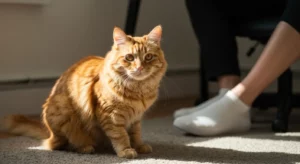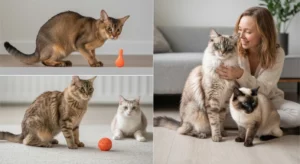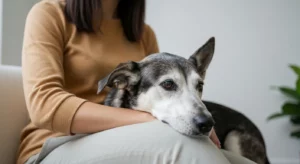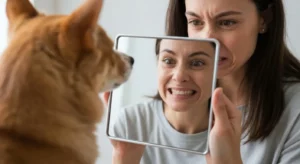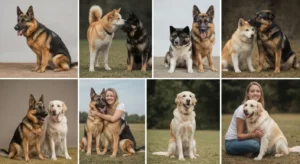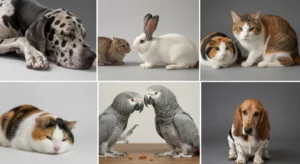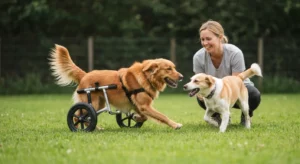There are few things I love more than sinking into my couch after a long day, phone in hand, and scrolling through the latest viral pet compilation videos. As a former vet tech and lifelong shelter volunteer, you might think I’d be numb to it all by now. But it’s the opposite. Every hilarious dog fail or heartwarming cat cuddle sends me right back to a memory of an animal I’ve loved, cared for, or laughed at until I cried.
These short clips aren’t just entertainment for me; they’re little windows into the universal language of pet ownership. They remind me of the chaos, the unconditional love, and the profound lessons these animals teach us. This month’s crop of viral hits was particularly good, and each one sparked a vivid memory. So, grab a cup of coffee, let your own furry friend curl up at your feet, and let me share the stories behind the clips—the real-life moments that these videos always bring to mind.
-
The “Guilty Dog” Who Definitely Ate the Cake
You’ve seen this one a million times: the camera pans across a trail of crumbs to a dog cowering in the corner, refusing to make eye contact, with frosting on its nose. I saw a classic “guilty Golden Retriever” video this week and it immediately transported me back to my Beagle, Buster, and the Great Birthday Cake Heist of 2012.
Buster was a master of opportunity. I had just finished decorating a three-layer chocolate cake for my husband’s birthday and left it on the kitchen counter—or so I thought. I ran upstairs for just two minutes, and when I came back down, the kitchen was silent. Too silent. Buster was hiding under the dining room table, not moving a muscle. He wasn’t looking at me, but his whole body was tense, his ears were back, and he was doing this little lip-licking thing he did when he was stressed. And on the floor was a demolished cake stand and a few tell-tale crumbs.
My Takeaway: It’s so easy to label that look “guilt,” but after years in the vet field, I know better. What we interpret as guilt is actually a complex canine response called appeasement. Buster wasn’t thinking, “Oh no, I broke the rules.” He was thinking, “Oh no, Mom is home, her voice sounds tense, and there’s a weird mess on the floor. I need to show her I am not a threat.” He was reacting to my energy and the change in the environment, not regretting his delicious, chocolatey decision. Understanding this helps you react with patience and training, not frustration.
-
The Cat Who Methodically Knocks Everything Off a Shelf
Ah, the gravity-testing feline. A video of a sleek black cat pushing, one by one, every single item off its owner’s nightstand made the rounds this month. I had to laugh because it was like watching a replay of my life with Milo, a tabby I adopted who was my furry little agent of chaos.
When I first got him, I’d come home to find pens, lip balm, and my TV remote on the floor. I thought it was just him being a jerk. But then I started paying closer attention. It only happened on days when I worked a long shift at the clinic and didn’t have time for our usual morning play session. Milo wasn’t being malicious; he was bored out of his mind. He had figured out that knocking something over was a surefire way to get a reaction from me. It was his version of sending a text message: “HELLO. I EXIST. PLAY WITH ME.”
My Takeaway: This behavior is almost always a cry for stimulation. I solved Milo’s “problem” by introducing puzzle feeders that made him work for his treats and committing to a vigorous 15-minute play session with a feather wand before I left for work. His shelf-clearing antics stopped almost overnight. If your cat is a gravity enthusiast, try enriching their environment before you lose your mind. It’s often a sign of intelligence, not defiance.
-
The Parrot Who Sings Pitch-Perfect Opera
A video of an Amazon parrot hitting a flawless high C was absolutely stunning this month. It’s incredible to witness, but it also gives me a slight sense of dread. I remember a cockatoo named Pavarotti who was surrendered to the shelter where I volunteered. His previous owner bought him after seeing a similar video, dreaming of a talented, chatty companion.
The reality was that Pavarotti was brilliant, but he was also demanding, loud, and incredibly destructive when he didn’t get the several hours of one-on-one social interaction he needed every single day. He had plucked out most of his chest feathers from stress and anxiety. He didn’t sing opera; he screamed. It took months of dedicated work from our avian specialist to help him feel secure again.
My Takeaway: Parrots are not living decorations or a fun party trick. They are more like having a perpetual toddler with a megaphone and a pair of bolt cutters. Their intelligence is immense, but so are their emotional and social needs. Please, if a viral video tempts you, do months, if not years, of research. Volunteer at a bird rescue. Understand the lifetime commitment before bringing one home.
-
The Unlikely Friendship: Pit Bull and Tiny Kitten
Who doesn’t melt at a video of a big, blocky-headed pit bull gently grooming a tiny foster kitten? These videos are pure gold, and they do so much to combat negative breed stereotypes. It reminded me of a pair I worked with at the shelter: a brindle pit bull mix named Tank and a scrawny, spicy tortie kitten we called Nutmeg.
Tank had been a bait dog and was terrified of everything—people, loud noises, other dogs. We put Nutmeg in a separate enclosure in the same quiet room to recover from an eye infection. One day, a volunteer accidentally left Nutmeg’s kennel unlatched. We found her curled up and fast asleep against Tank’s belly. From that day on, they were inseparable. Nutmeg’s boldness taught Tank to trust, and Tank’s steady, gentle presence gave Nutmeg a sense of safety. They were adopted together, of course.
My Takeaway: While these friendships are beautiful, they must be handled with extreme care. Never force an interaction. A successful introduction depends on the individual personalities of the animals, not their breed or species. It requires slow, supervised steps. Start by letting them smell each other’s scents on blankets, then progress to visual contact through a baby gate before ever allowing them in the same space. Patience is everything.
-
The Epic Indoor “Zoomies” Catastrophe
A hilarious clip of a dog getting the zoomies, skidding across hardwood floors, and taking out a lamp and a houseplant, was all over my feed. I felt that owner’s pain in my soul. My retired racing Greyhound, Stella, was the queen of indoor zoomies.
Greyhounds are known as “45-mile-per-hour couch potatoes,” and it’s true. They sleep most of the day, but twice a day, like clockwork, Stella would explode with pent-up energy. Her long, gangly legs weren’t built for traction on my laminate floors. One memorable evening, her zoomie circuit involved launching off the couch, skidding into the coffee table (sending magazines flying), and ending in a heap in her dog bed. It was both hysterical and terrifying.
My Takeaway: Zoomies (or Frenetic Random Activity Periods) are a normal way for dogs to release energy. The key is providing a safe space for it. After the coffee table incident, I bought several long runner rugs to create a “zoomie runway” for her. For other dogs, it might mean recognizing the pre-zoomie signs (like a play bow or a certain look in their eye) and immediately opening the back door for a safe sprint in the yard. Don’t punish the zoom; manage the environment.
-
The Dog “Talking” with Communication Buttons
The videos of dogs like Bunny pressing buttons to form sentences like “Mad. All done. Go outside” are fascinating. They spark so many questions about canine cognition. Inspired, I tried it with my incredibly smart Border Collie, Skye.
I started with just one button: “Outside.” It took weeks of me pressing the button every single time we went out before she made the connection. The first time she pressed it herself, I nearly lost my mind with excitement. We eventually added “Play” and “Food.” It was an amazing bonding experience, but it was *slow*. It wasn’t the rapid-fire conversation you see in curated viral clips. For every successful press, there were ten accidental ones when she just walked over the buttons.
My Takeaway: These button systems are a phenomenal enrichment tool, but they require immense patience and realistic expectations. Your dog probably won’t be discussing existential philosophy. But it can give them a new way to express their basic needs, which reduces frustration for both of you. If you try it, start simple and celebrate the small victories. It’s more about the journey of learning together than the destination of complex sentences.
-
The Houdini Husky Who Can Open Any Door
I saw a security camera video of a Siberian Husky unlocking a deadbolt, opening the door, and trotting off for a neighborhood adventure. Every Husky owner watching probably nodded with a weary sense of recognition. This reminded me less of a pet of my own, and more of a client at the vet clinic whose Husky, Ghost, was a local legend.
Ghost could climb chain-link fences, unlatch gates, and had even figured out how to open the sliding glass door. His owners had spent a fortune reinforcing their yard. They weren’t bad owners; they just underestimated the potent combination of intelligence and energy that defines the breed. Ghost wasn’t running away; he was just bored and looking for a job to do.
My Takeaway: With breeds like Huskies, Malamutes, and German Shepherds, physical exercise is only half the battle. You must exercise their minds. We talked to Ghost’s owners about puzzle toys, scent work games (like hiding treats around the house), and regular training sessions to teach new tricks. A tired dog is a good dog, but a mentally fulfilled dog is less likely to plot a great escape.
-
The “If It Fits, I Sits” Cat in a Tiny Box
There’s nothing more pure than a 15-pound cat trying to cram itself into a shoebox. A recent video of a fluffy Maine Coon doing just this was a serotonin boost for millions. It took me back to my sweet senior cat, Cleo, in her final years.
Cleo had arthritis and moved a bit slower, but her love for small, enclosed spaces never faded. Her favorite spot was the flimsy cardboard tray that a case of canned cat food came in. It seemed so uncomfortable to me, but she would curl up in it so tightly and purr like an engine. It was her safe space. When she was feeling vulnerable or tired, that’s where we’d find her.
My Takeaway: This seemingly weird cat behavior is rooted in instinct. The tight, enclosed space makes them feel secure and hidden from potential predators. The cardboard also acts as an insulator, helping them maintain body heat. It’s one of the easiest and cheapest forms of cat enrichment you can provide. So, before you throw out that Amazon box, just leave it on the floor for a day. It’s a simple act of love.
-
The Gentle Giant Dog Welcoming a New Baby
A tear-jerking compilation of Golden Retrievers and Labradors gently nuzzling newborn babies has been making the rounds, and it gets me every time. It reminded me of the intense anxiety and planning that went into introducing my sweet, goofy Golden, Sadie, to my firstborn son.
Sadie was my first baby. She was spoiled rotten and the center of my world. I was so worried she would be jealous or accidentally too rough. Before we even brought our son home from the hospital, my husband brought home one of his receiving blankets for her to smell. When we walked in the door, I greeted Sadie first, alone, while my husband waited with the baby. We let her approach the baby on her own terms, with tons of praise and treats for calm, gentle sniffs. She seemed to understand immediately. She appointed herself his guardian, and her favorite place to sleep was on the rug right next to his crib.
My Takeaway: A successful introduction is all about positive association and management. Never leave a dog and a baby unattended, no matter how trustworthy the dog is. Create a positive association by giving the dog treats and praise whenever the baby is around. Most importantly, make sure to still carve out special one-on-one time for your dog, so they know they haven’t been replaced. That walk or cuddle session can make all the difference.
-
The Hero Pet Who Sensed Danger
The final video that stuck with me this month was a Ring camera clip of a cat frantically pawing at its owner’s bedroom door in the middle of the night, just minutes before a smoke alarm went off from a kitchen fire. These videos give me chills. They speak to a connection that goes beyond what we can easily explain.
I once treated a quiet little terrier mix at the clinic who came in for a check-up. The owner told me, with tears in her eyes, that the dog, Pip, had saved her life. She was a diabetic, and one night Pip, who never, ever got on the bed, jumped up and started whining and licking her face insistently. She woke up feeling groggy and unwell, tested her blood sugar, and found it was dangerously low. She was able to get the glucose tabs she needed just in time. Pip had sensed the chemical change in her body before any machine could.
My Takeaway: Our pets are far more attuned to our world—and our bodies—than we give them credit for. Their incredible senses of smell and hearing, combined with their deep bond with us, allow them to notice subtle shifts we might miss. The greatest lesson I’ve learned from a lifetime with animals is to trust their intuition. When your calm dog is suddenly anxious, or your aloof cat is suddenly clingy, pay attention. They might be trying to tell you something important. It’s the ultimate expression of the bond we share, and the most powerful reminder of why we fill our lives, and our camera rolls, with them.




